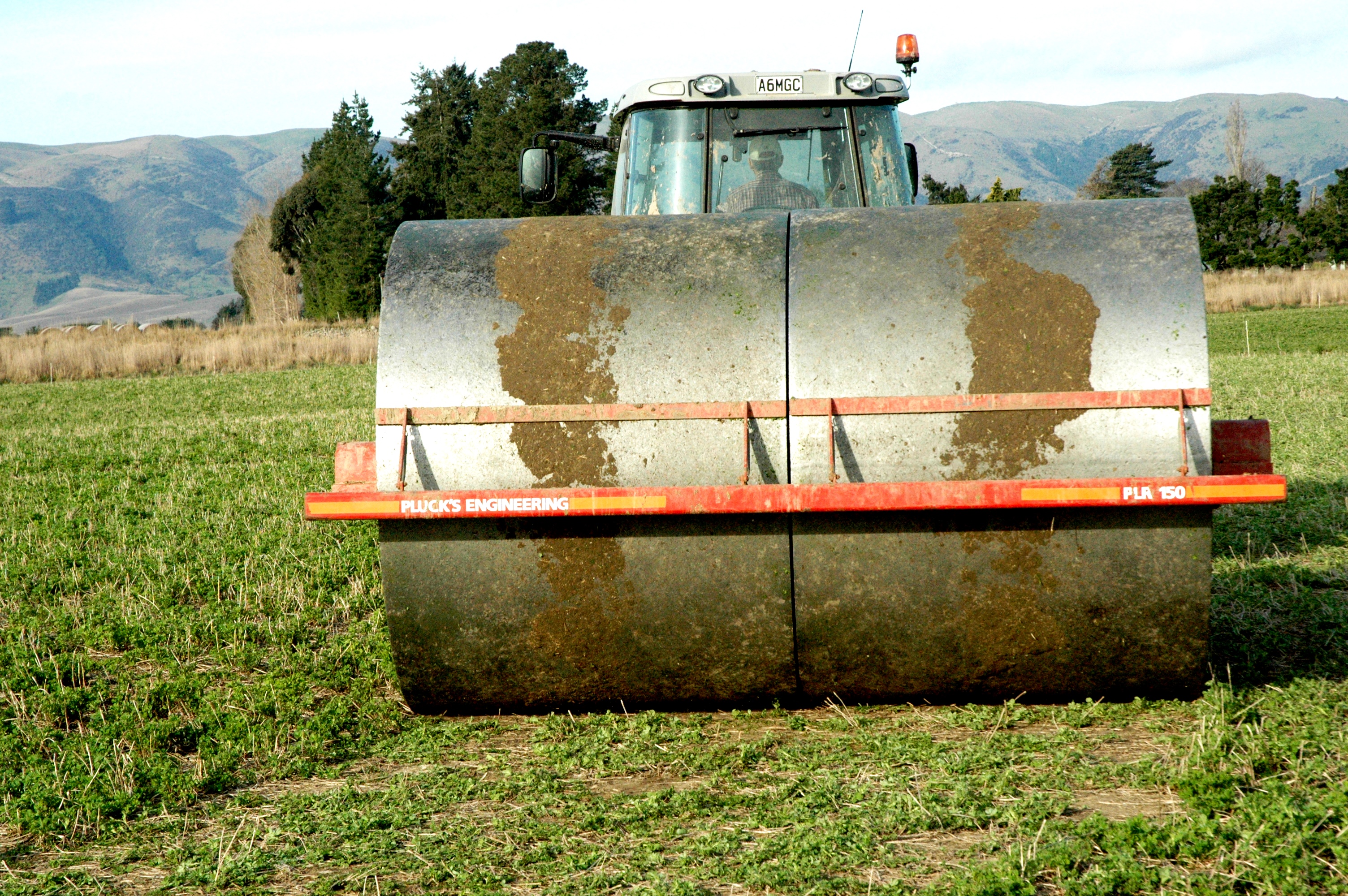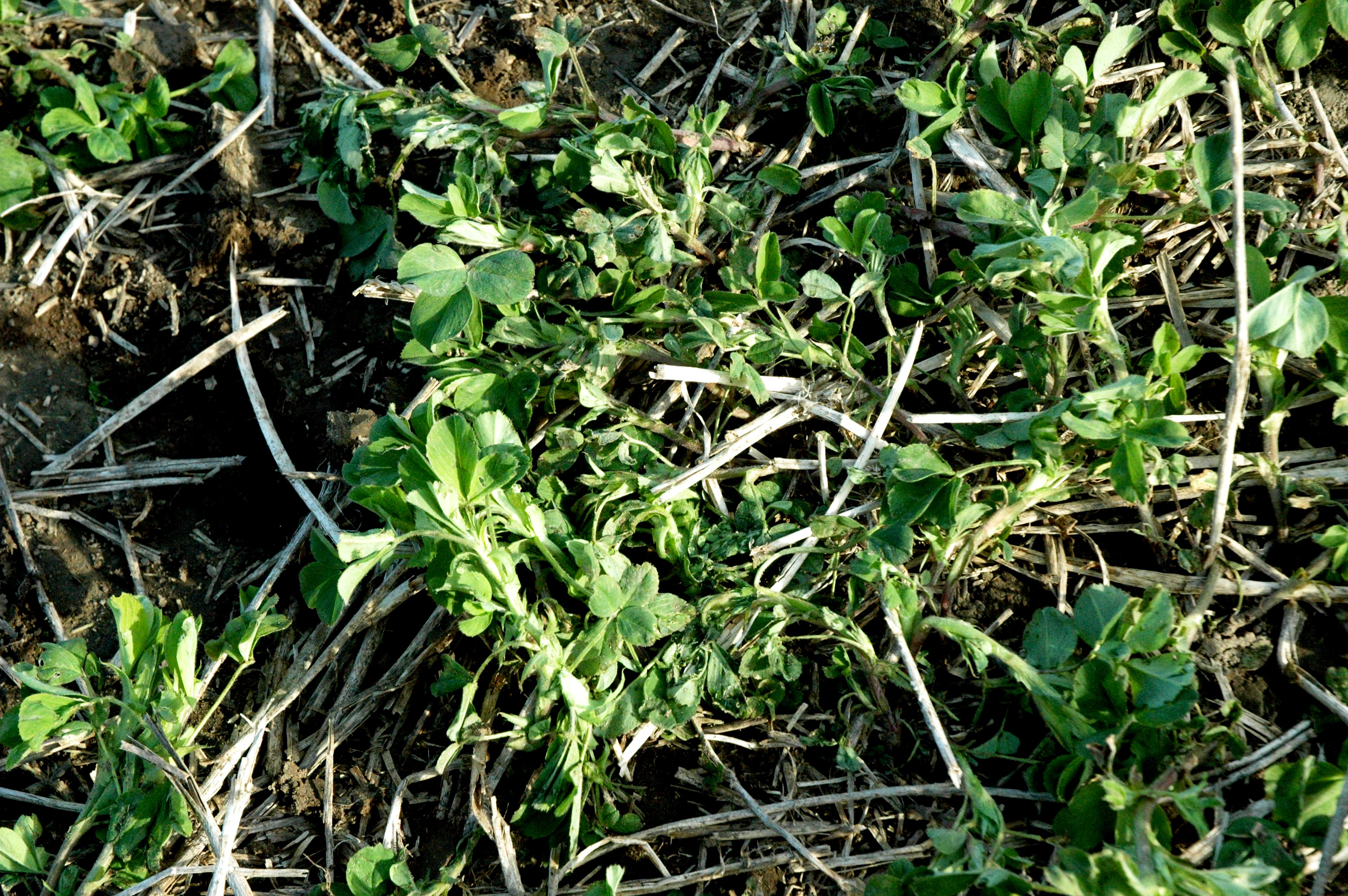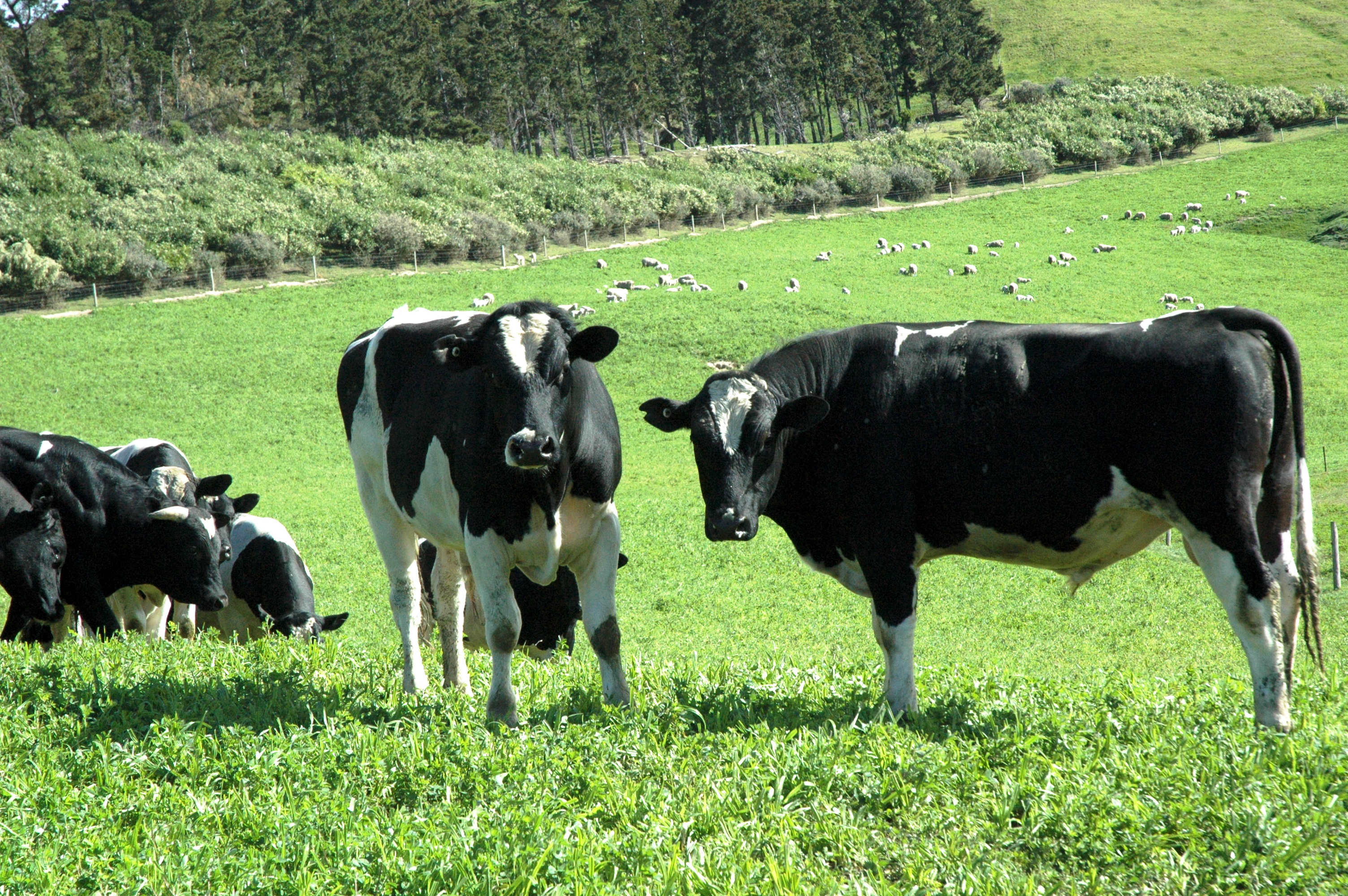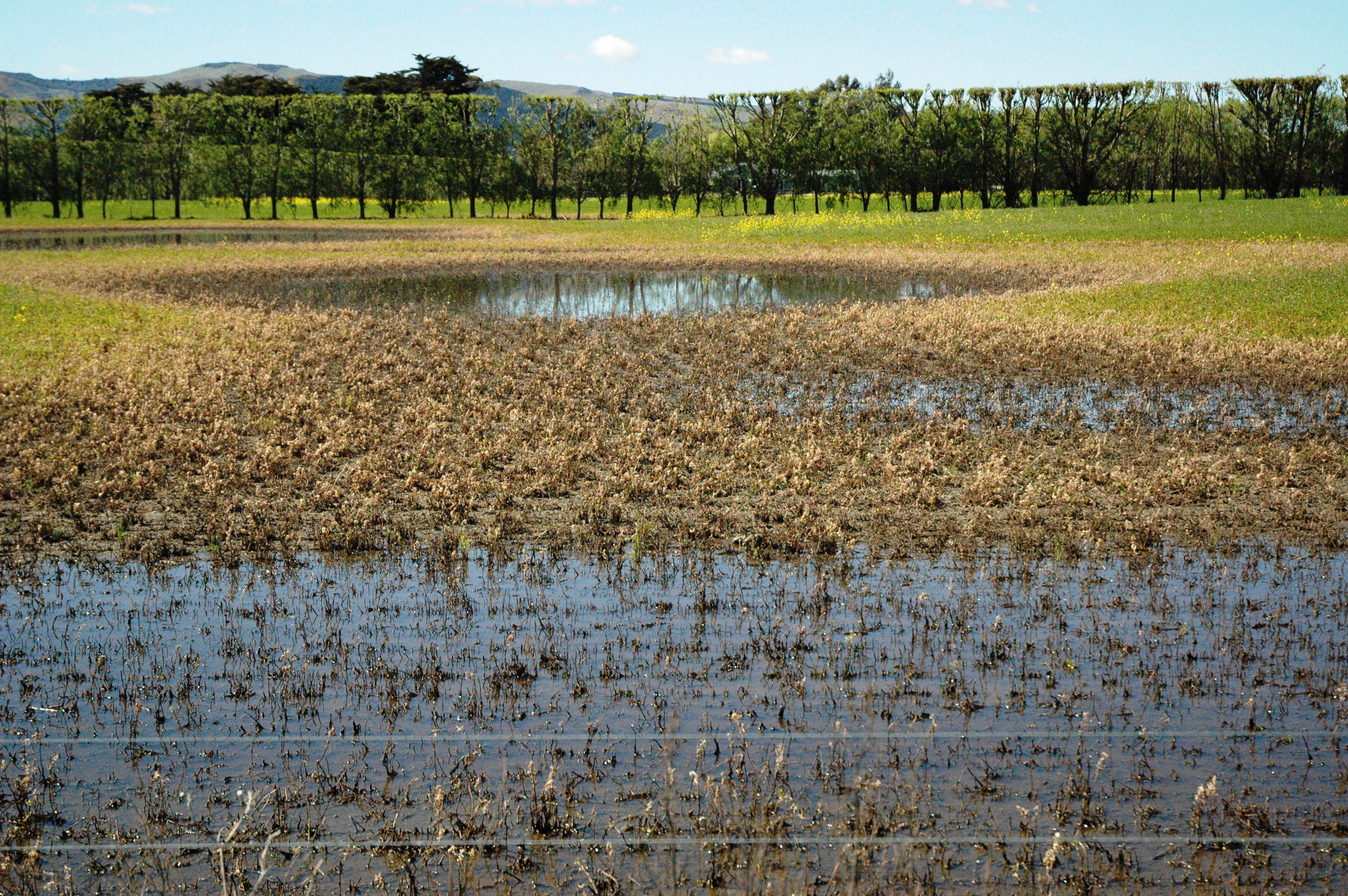Posted on behalf of Prof. Derrick Moot
Recent trips from South Canterbury to Marlborough highlight several emerging issues for lucerne in this early spring. The particularly high (>200 mm) rainfall in June and subsequently warm winter temperatures have combined to create unusual circumstances. Here, Derrick outlines some of the problems and solutions to consider over the next week or two.
1) Nutrient deficiencies appearing
High winter rainfall can cause sulphur to leach – it is negatively charged in the soil just like nitrate – so there are many pale yellow lucerne stands that appear nitrogen deficient. Note: for nutrient deficiencies it is usually the whole paddock that looks yellow not patches (which is more indicative of water logging or insect damage).
A dressing of ammonium sulphate can alleviate the problem in the short term. For example, 100 kg/ha would supply about 20 kg/ha of N and S. The application of nitrogen to lucerne may seem odd. However, in early spring after heavy winter rainfall, the nitrogen levels in the soil can be low. This is because any nitrate will have leached or moved down the soil profile just like the sulphate. Soil temperature is still too low to have much mineralization occurring to release N. Also, nitrogen fixation hasn’t kicked in because of low temperatures meaning the nodulation process is still warming up.
As the spring progresses, if the pale yellow persists, get a herbage test when the lucerne is growing rapidly (mid October to mid November in most regions). This may show molybdenum or sulphur levels as still be being low. Correct these with maintenance super dressing in October/November/December. These applications should be based on the soil tests you did last autumn!
Don’t just accept the lucerne mix fertilizer– do your own soil and herbage test.
For stands that are usually cut and carried potassium can become deficient even if your soil test says it is fine – that’s another reason to herbage test.
2) Some stands missed winter spraying
The wet weather has also made ground conditions difficult for spraying in some regions. This means crops have more Poa annua, shepherd’s purse, storksbill, barley grass, thistles, dandelions (and their cousins). If left, these will severely compromise the production and persistence of the stand. Deal with weeds after the first grazing. Unfortunately the excellent spring growing conditions means the weeds will have become more established. Therefore, the usual winter sprays of gramoxone and atrazine will be less effective.
Consider specialist grass killers like Gallant if you have grasses as your major weed. Broadleaf weeds can be controlled with chemicals such as Preside, Basagran and Velpar. These need warmer soil temperatures and come with different trade names and formulations so talk to your agrichemical rep about options. Don’t leave the weeds to become even more established as they grow through spring.
Unlike red wine – weedy lucerne will not improve with age!
3) Lucerne growth is early
The early winter grazing and mild temperatures have combined to mean many stands appear 2-3 weeks earlier than normal. This is the case for our experiments at Ashley Dene with stands already 15 cm high and being stocked with ewes and lambs now – three weeks earlier than we have ever had to before. However, we are understocked with lambing a little slower than anticipated. There are several ways to deal with the extra/early cover. At the same time we are aware that spring was early last year and then got really cold – and the lucerne and grass stopped so we fed out barley.
a) Think about hay/silage paddocks.
If you usually graze all your lucerne- this year may be one to take a cut of silage for you or a local who owns black and white milk producers and needs protein! Select which or your paddocks are most suitable for cutting? At the moment those young stems are soft and will bend but not break so you can roll stones into the damp soil. If you are unsure drive across the paddock and then go back and inspect the wheel marks. If the stems have broken they are too stiff and mature for heavy rolling. At this time of the year they will usually bounce straight back up. In two weeks’ time they are more likely to break so get onto this now on stands that are 10-15 cm tall.
The paddock to choose might be the one you had sorted to be paddock 6 in your rotation. So drop it out of the grazing rotation and use five paddocks for the first rotation. A good compromise between quantity and quality is to cut it when about 45-50 cm tall. In spring, unsettled weather means silage is a more reliable option – use an inoculant and make sure it is well consolidated.


b) Start ewes and lambs grazing lucerne earlier.
If you usually wait until tailing for lucerne grazing think about putting ewes and lambs on two paddocks for lambing. Stock them at about 7 ewes per hectare for 3 weeks onto a paddock that is already 15 cm tall. Stock from these two paddocks can then be boxed up into one mob after tailing and go onto paddock 3 and start the grazing rotation. Check out the latest blog posts from ‘Bonavaree’ for more details of lambing on lucerne. The main point is to stock at a rate that sees the lucerne continue to grow ahead of the lambs rather than being eaten into.
c) Increase your stocking rate.
This can be done by starting with higher stocking rates (12-14 ewes and lambs per ha) plus cattle. The use of 15 month old cattle with a bloat capsule can raise stocking rates quickly and complement the lamb grazing. Bloat is less likely on this first round of lucerne that is still quite short with high dry matter (sugar) content. As the spring progresses and stems stretch rapidly the need for fibre and salt increases. So if you have 24 ha of lucerne that means 6 paddocks of 4 ha with all animals (300+ ewes plus lambs on the first 4 hectares). For details of the rotation see the PRACTICAL LUCERNE MANAGEMENT GUIDE.

d) Destock hill blocks earlier.
For those with lambing blocks on hills this may be an excellent year to let annual clovers like sub reseed and get a seed bank into the soil. Bring ewes and lambs down onto the lucerne as soon as practical to deal with its growth. This will allow annual clovers to flower and seed and recover on hill areas. The number of sub seedlings should be nurtured in years with excess feed. When the spring/summer becomes dry, the extra dry matter grown in the spring provides a bank of maintenance feed to be used and cleared off post weaning or by cattle.
4) Water logging of areas of paddocks
There are parts of Ashley Dene still under water because of the high water table created by the June rainfall. This means some parts of our lucerne paddocks have been under water for 10 weeks! This is a once every 30 year event on a five year old stand – so we feel it has been worthwhile having the lucerne despite losing it now. The dead areas will become a haven for weeds if we don’t resow something into them. Because it is a thinning paddock we will probably just drill in some cocksfoot. For areas of a paddock that go under water every year balansa clover can be scattered on the surface. For areas of new paddocks (1-2 years old) that have been drowned this year but are usually not underwater – resow lucerne into the bare patches. Do this after spring weed control.

